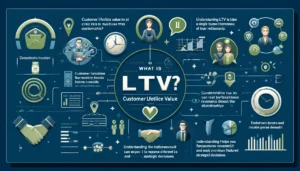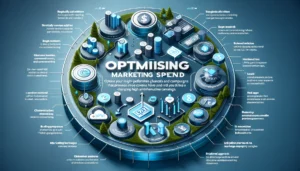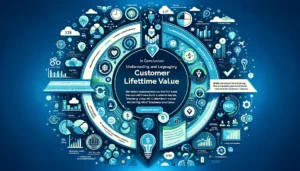LTV: Maximise Profit, Learn How to Understand and Leverage Customer Lifetime Value

Understanding and leveraging Customer Lifetime Value (LTV) is crucial for businesses aiming to maximise profits and sustain growth.
This article explores the fundamentals of LTV, its calculation, and strategic applications in different business models to enhance customer acquisition, retention, and overall profitability.
Key Takeaways
- LTV is a critical metric that estimates the total revenue a business can expect from a customer over the course of their relationship.
- Understanding the relationship between LTV and Customer Acquisition Cost (CAC) is essential for optimising marketing strategies and expenditures.
- Segmentation and personalised marketing based on LTV can significantly enhance customer retention and profitability.
- Different business models, such as subscription services and e-commerce platforms, can benefit uniquely from applying LTV insights.
- Technological advancements and predictive analytics are shaping the future of LTV optimisation, offering new ways to understand and engage customers.
Understanding the Fundamentals of Customer Lifetime Value (LTV)
What is LTV?
Customer Lifetime Value is a critical metric that quantifies the total net profit a business can expect from a single customer throughout their relationship. Understanding LTV helps you forecast future revenue and make informed strategic decisions.
Why is LTV Important?
LTV is not just a number; it’s a reflection of your business’s health and potential for growth. By focusing on increasing the LTV, you’re essentially investing in long-term profitability rather than short-term gains. This approach helps in allocating marketing resources more effectively and in enhancing customer relationships.
Key Components of LTV
To fully leverage LTV, you need to understand its key components:
- Revenue: The total amount of money a customer spends on your products or services.
- Churn Rate: The percentage of customers who stop using your business over a certain period.
- Contribution Margin: This is the profit margin after variable costs are subtracted, which directly contributes to the LTV.
By mastering these components, you can optimise your strategies to not only attract but also retain high-value customers, thereby maximising your business’s overall profitability.
Strategies for Enhancing Customer Acquisition with LTV
Aligning LTV and CAC
To effectively enhance your customer acquisition, it’s crucial to align the Customer Lifetime Value with the Customer Acquisition Cost (CAC). Ensure that the LTV exceeds the CAC to guarantee profitability. This alignment not only optimises your spending but also maximises the return on investment in marketing efforts. Consider conducting a Google ads audit or a PPC audit to refine your spending strategies.
Targeting High-Value Customers
Identifying and targeting high-value customers is essential for your acquisition strategy. These customers provide the most significant return on investment due to their higher LTV. Utilise data analytics and customer segmentation to pinpoint these individuals. Tailoring your marketing efforts towards these customers can dramatically increase your acquisition efficiency and overall profitability.
Optimising Marketing Spend
Optimising your marketing spend is pivotal in maximising LTV. Focus on high-performing channels and campaigns that have proven to yield high LTV customers. This might include refining your strategies in Google ads PPC, Google Adwords PPC, or other PPC eCommerce agency services. Regularly review and adjust your marketing strategies to ensure they align with changing customer behaviours and market conditions. A structured approach to budget allocation will help in directing resources to the most profitable channels, enhancing your overall business growth.
Calculating Customer Lifetime Value
Basic LTV Formula
To start, you’ll need to grasp the Basic LTV Formula, which is crucial for understanding the financial contribution of your customers over time. The formula typically involves multiplying the average order value by the purchase frequency and then by the customer lifespan. This calculation gives you a clear monetary figure representing the expected revenue from a customer throughout their relationship with your business.
Factors Influencing LTV
Various factors can significantly impact your LTV calculations. These include customer acquisition costs, retention rates, and the average purchase value. By analysing these elements, you can refine your strategies to enhance the overall profitability of your customer base. It’s essential to consider how each component interacts with the others to get a comprehensive view of your customer’s value.
Using LTV in Financial Projections
When you incorporate LTV into your financial projections, you’re equipped to make more informed decisions regarding budget allocations and marketing strategies. This approach allows you to prioritise investments in high-value customer segments and optimise your marketing spend for maximum return. Understanding this helps in crafting a roadmap for long-term business success and sustainability.
Applying LTV in Marketing Strategies
Segmentation Based on LTV
To effectively utilise Customer Lifetime Value in your marketing strategies, begin by segmenting your customer base according to their LTV. This allows you to identify which segments are most profitable and deserve more attention and resources. For instance, you might find that customers from a specific demographic or those who purchase certain products have a higher value to your brand. Tailoring your marketing efforts to these segments can significantly increase your ROI.
Personalised Marketing Approaches
Personalisation is key in modern marketing, and LTV is a crucial metric that helps tailor your approaches. By understanding the LTV of different customer segments, you can create more targeted and effective marketing campaigns. This might involve using predictive analytics to anticipate customer needs or adjusting your messaging and offers based on the customer’s previous interactions and purchase history.
Resource Allocation for Maximum Impact
Allocating your marketing resources effectively is crucial for maximising returns. Use LTV to guide your decisions on where to invest in marketing efforts. For example, investing more in PPC management for high-LTV customer segments can yield better results than spreading your budget too thinly across all segments. This strategic allocation not only optimises your marketing spend but also enhances overall business performance.
LTV in Different Business Models
Subscription Services
In subscription services, LTV is not just a metric but a cornerstone of financial planning and strategy. It helps you understand the sustainability and profitability of your customer relationships over time. By focusing on the LTV:CAC ratio, you can gauge whether your acquisition costs are justified by the long-term revenue each customer generates. This is crucial for maintaining a healthy cash flow and ensuring business viability.
E-commerce Platforms
For e-commerce platforms, LTV enables you to tailor your marketing strategies to customer behaviours and preferences. It’s essential for segmenting your audience and crafting personalised marketing campaigns that resonate with high-value customers. This approach not only enhances customer experience but also boosts your overall sales and profitability.
B2B Enterprises
B2B enterprises benefit greatly from understanding LTV by aligning their sales strategies with customer value creation. It allows for more effective resource allocation and helps in identifying which clients are likely to be the most profitable over time. This insight is invaluable for optimising your sales process and improving client retention rates.
Improving Customer Retention through LTV Insights
Developing Retention Strategies
To effectively enhance customer retention, you need to develop strategies that are deeply rooted in understanding the LTV of your customers. This involves analysing behavioural patterns and tailoring retention programs that not only meet but exceed customer expectations. Focus on creating value that encourages customers to stay longer and engage more deeply with your brand.
Enhancing Customer Experience
A superior customer experience is pivotal in boosting retention rates. By leveraging how much your new clients are worth to you, you can pinpoint areas where your service can be improved to meet customer needs more effectively. This might include streamlining processes, enhancing product features, or providing exceptional customer support.
Leveraging Feedback and Data
Feedback and data are your best tools for understanding what keeps customers coming back. Regularly gather and analyse customer feedback to refine your retention strategies. Use this data to make informed decisions about where to allocate resources for the greatest impact on customer loyalty and LTV.
By focusing on these areas, you can significantly improve your customer retention rates and, consequently, the overall health of your business.
Future Trends in Customer Lifetime Value Optimisation
Technological Advancements
The landscape of Customer Lifetime Value (LTV) is rapidly evolving with cutting-edge technological advancements. You’ll find that automation and AI are becoming integral in analysing and predicting customer behaviour, which in turn enhances the accuracy of LTV calculations. Embracing these technologies not only streamlines the process but also provides deeper insights into customer preferences and future behaviours.
Predictive Analytics in LTV
Predictive analytics is revolutionising the way businesses understand and interact with their customers. By integrating predictive analytics into your LTV strategies, you can anticipate customer needs and tailor your services to meet those needs proactively. This approach not only boosts customer satisfaction but also significantly increases the potential LTV of each customer.
Evolving Consumer Behaviors
Consumer behaviours are not static; they evolve. Keeping a pulse on these changes is crucial for maintaining and increasing LTV. By adapting to trends and incorporating feedback, you can ensure that your strategies remain relevant and effective. Utilising customer feedback and data to refine your approach will help you stay ahead in a competitive market.
Conclusion
In conclusion, understanding and leveraging Customer Lifetime Value (LTV) is a pivotal strategy for maximising profit and fostering sustainable business growth. By comprehending the full scope of LTV, businesses can make informed decisions on customer acquisition, retention strategies, and resource allocation.
This knowledge empowers companies to not only attract high-value customers but also to maintain profitable relationships over time. As we’ve explored, lifetime values go beyond mere transactions, providing a comprehensive view of a customer’s long-term value to the organisation. Therefore, integrating LTV into your business metrics is essential for achieving long-term success in today’s competitive market.
Frequently Asked Questions
What is Customer Lifetime Value (LTV)?
Customer Lifetime Value is a metric that estimates the total revenue a business can expect to generate from a single customer throughout their entire relationship. It includes all revenue from future purchases, repeat business and overall engagement.
Why is LTV important for businesses?
LTV is crucial as it helps businesses understand the long-term value of customers, assess the profitability of customer acquisition, and allocate resources effectively to maximise long-term profits.
How is LTV calculated?
The basic LTV formula considers the average revenue per customer, the gross margin, and the retention rate over a specific period. It helps businesses predict the total profit attributed to the entire future relationship with a customer.
How can businesses increase their LTV?
Businesses can increase LTV by enhancing customer retention strategies, improving customer experience, and targeting high-value customers to foster long-term relationships and repeat business.
What is the relationship between Lifetime Value and CAC?
The relationship between Customer Lifetime Value and Customer Acquisition Cost (CAC) is vital for assessing business sustainability. A higher lifetime value compared to CAC indicates profitable customer acquisition and a sustainable customer base.
How does LTV influence marketing strategies?
Lifetime value influences marketing strategies by allowing businesses to segment customers based on their value, focus on high-value customers, and allocate marketing resources more effectively to maximise returns on investment.
Author
Search Blog
Free PPC Audit
Subscribe to our Newsletter
The Voices of Our Success: Your Words, Our Pride
Don't just take our word for it. With over 100+ five-star reviews, we let our work-and our satisfied clients-speak for us.
"We have been working with PPC Geeks for around 6 months and have found Mark and the team to be very impressive. Having worked with a few companies in this and similar sectors, I rate PPC Geeks as the strongest I have come across. They have taken time to understand our business, our market and competitors and supported us to devise a strategy to generate business. I value the expertise Mark and his team provide and trust them to make the best recommendations for the long-term."
~ Just Go, Alasdair Anderson




